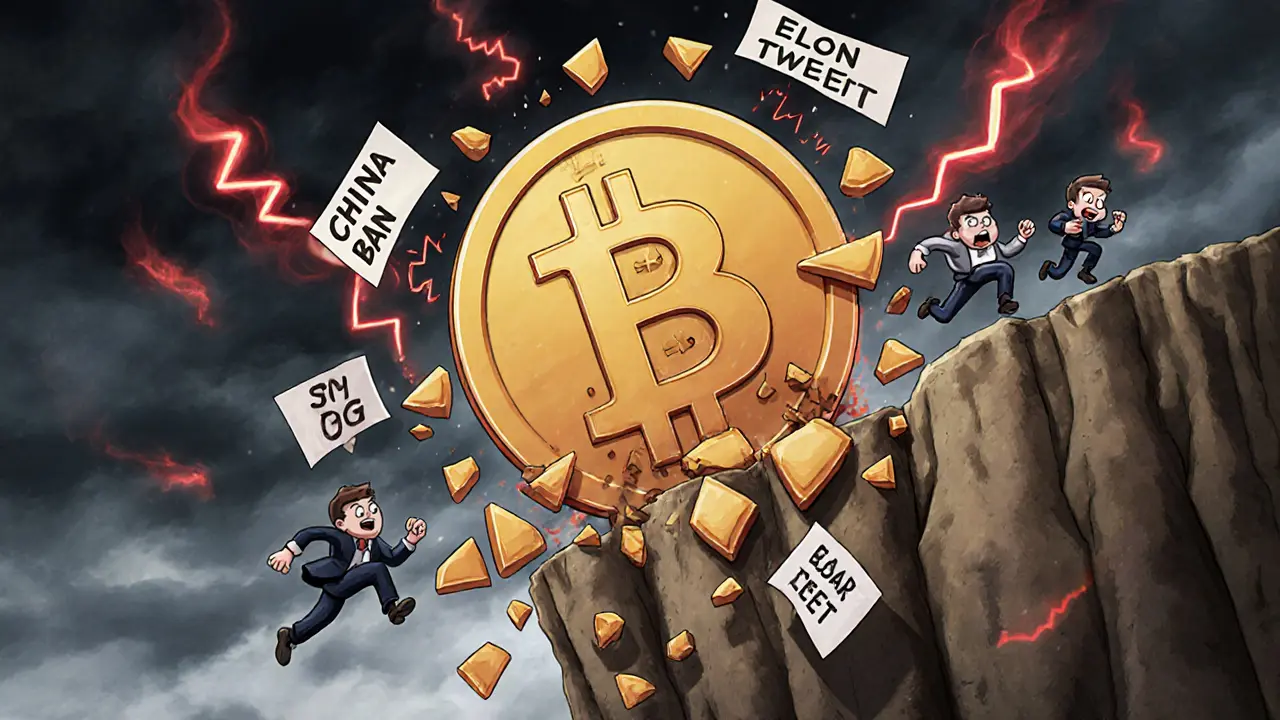Cryptocurrency Market Reactions: How News, Regulations, and Events Move Prices
When you hear that a country has banned crypto mining or seized millions in Bitcoin, that’s not just a headline—it’s a cryptocurrency market reaction, how prices, trading volumes, and investor behavior shift in response to real-world events. These reactions don’t happen in a vacuum. They’re triggered by concrete actions: governments freezing wallets, exchanges shutting down for users in certain countries, or regulators labeling a token as a security. What you see on your chart isn’t just speculation—it’s the market digesting policy, law, and real-world consequences.
Take crypto seizures, the forced confiscation of digital assets by authorities. When the U.S. built a $17 billion Strategic Bitcoin Reserve from seized coins, it didn’t just add to its holdings—it sent a signal: crypto isn’t untouchable. That alone caused panic selling in some markets and cautious buying in others. Meanwhile, when Angola shut down all mining operations to save electricity, miners didn’t just turn off machines—they sold their gear, dumped tokens, and fled the country. These aren’t isolated incidents. They’re data points that traders watch like weather reports.
Blockchain regulations, the legal frameworks governments impose on crypto use and trading, also drive market swings. Russia’s crackdown on unlicensed exchanges like Garantex didn’t just make those platforms risky—it made people rush to move funds out before they got locked. In El Salvador, when Bitcoin lost its legal tender status, the Chivo wallet’s collapse wasn’t just a tech failure—it wiped out confidence in the whole experiment. And when countries like Portugal offer zero taxes on long-term holdings, traders shift their base there, quietly moving capital and changing demand patterns.
These reactions aren’t random. They follow patterns. A new exchange with no audits, like Blockfinex or SkullSwap, triggers skepticism. A token with no team and a modifiable contract, like NiHao or SPHYNX, gets dumped fast. Even airdrops like CHIHUA or SUNI that offer nothing but a name cause confusion—some people claim them hoping for value, while others see them as red flags. The market reacts to trust signals: audits, team transparency, liquidity, and legal compliance. If any of those are missing, prices drop—fast.
And it’s not just about coins. When Levana Protocol’s trading volume vanished or STON.fi v2 became the go-to for TON users, those shifts changed how people thought about DeFi infrastructure. Or when NFT tickets started preventing scalping at live events, it showed crypto could solve real problems—sparking interest beyond speculation. Every time a new energy trading model uses blockchain, or a privacy coin like Monero gets targeted by regulators, the market takes notice. It’s not about what’s trending—it’s about what’s real, what’s legal, and what’s sustainable.
Below, you’ll find deep dives into exactly how these events play out: which exchanges got banned where, how seizures affect supply, why some tokens vanish overnight, and what regulators are really watching. No fluff. No hype. Just what moves the market—and why.
How News Events Trigger Crypto Volatility
News events drive crypto prices more than fundamentals. From Fed rate hikes to SEC rulings, headlines trigger rapid swings in Bitcoin and altcoins. Learn how sentiment, algorithms, and regulation create volatility-and how to respond.
